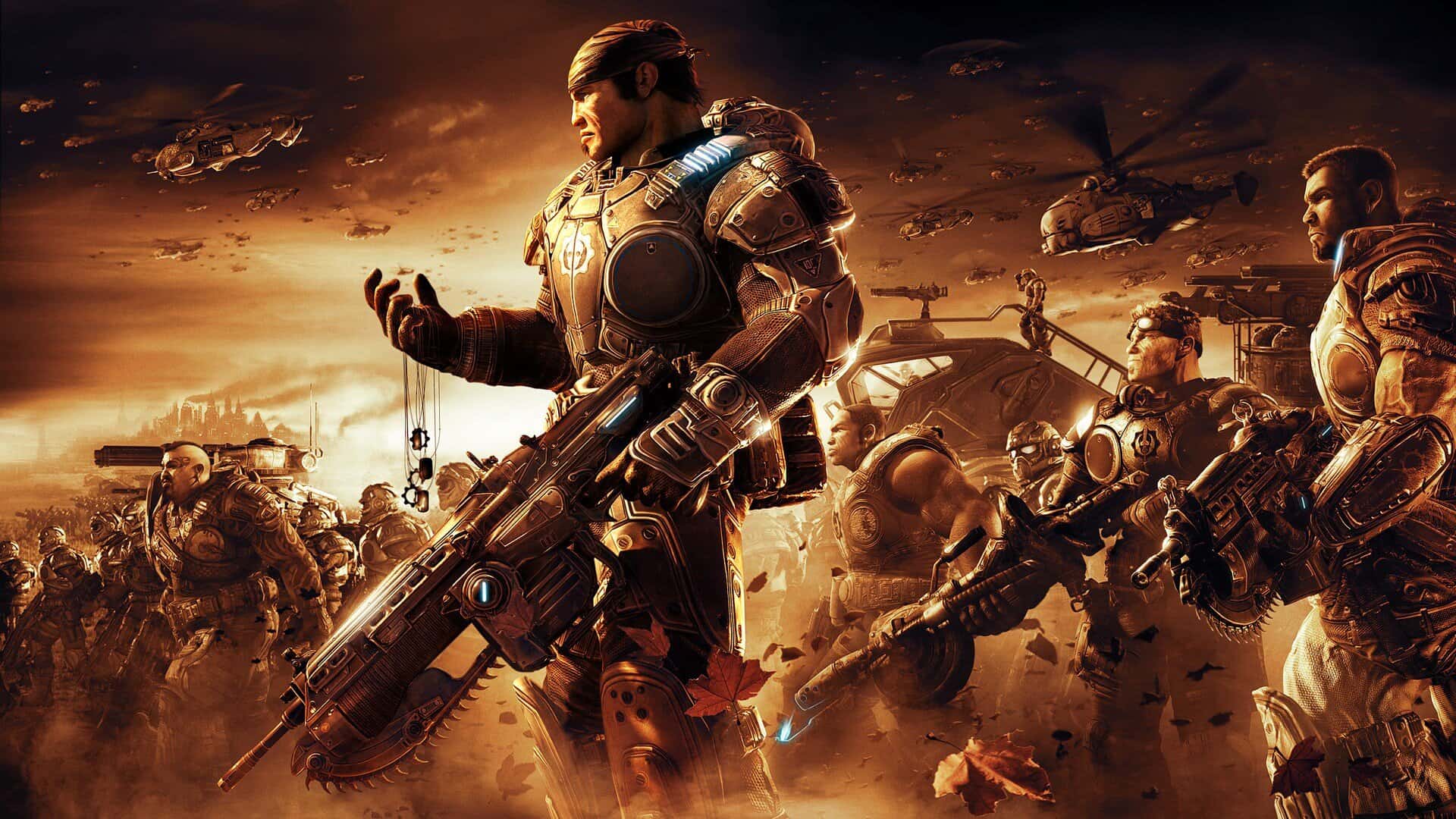The Gears of War series is one of the most influential video game franchises of all time, having dictated the mechanics of third-person games for almost two decades. Over the years, the series has had two main custodians. Epic Games conceived the franchise under the guidance of veteran developer Cliff Bleszinski, with The Coalition created to continue work on Gears of War after Epic Games decided on a change in direction for its future.
While the original developer Epic Games is now perhaps better known for Fortnite, the Gears of War series was a crucial step towards ensuring the studio became a household name for gamers. At its peak, it was an enormous exclusive series for Xbox, rivaling the likes of Halo and Fable to make the Xbox 360 a must-have console. Its best-in-class mechanics and iconic no-holds-barred gore meant gamers simply had to give it a try.
While it’s been a few years since a Gears of War title hit the shelves, all signs are pointing toward a release being on the way. The Coalition has been silent on the issue for a little while now, and hopefully, it isn’t long before the series makes its return.
Gears of War (2006)
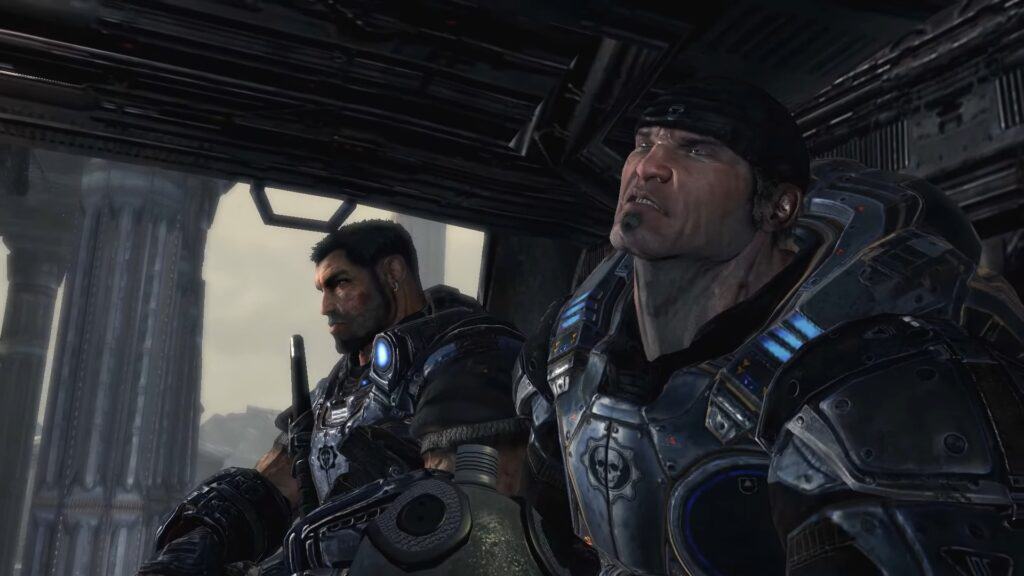
©Screenshot from Gears of War.
There’s no doubt about it – the original Gears of War is a triumph. Spawning a franchise, the third-person shooter puts the focus on cover mechanics, and it just feels right. So right in fact, that most third-person games in the years preceding attempted to emulate what Epic Games achieved here. To this day, there’s a strong argument that Gears of War is the blueprint of third-person perfection.
The game is still a shooter at heart, with a strong selection of weapons that encourage all types of gameplay. As you take damage, health is gauged by a huge ‘Crimson Omen’ cog in the center of the screen, a unique take on the ‘raspberry jam’ feature that seemed so prevalent in the mid-late 2000s and beyond. When health runs out, players are downed, and a series of brutal, gory executions can be performed. It instantly made Gears of War iconic.
The plot of Gears of War follows Marcus Fenix, a soldier reinstated to the military after a prison stint due to the emergence of a threat from the planet’s core – the Locust. Single-player missions are linear, but tell a captivating story that provides a great base for future titles.
However, it’s the multiplayer that made Gears of War a gaming titan. Its fast pace and excessive gore kept players engaged for years, on a series of maps that were designed to compliment it perfectly. It was punishing and rewarding in equal measure, a true formula for success. Where Call of Duty had Team Deathmatch, Gears of War had Execution. Death had consequences, a few minutes to watch from the sidelines as punishment. This emphasis on tactical gameplay was unfamiliar to many casual gamers, but it was a welcome change.
Gears of War 2 (2008)
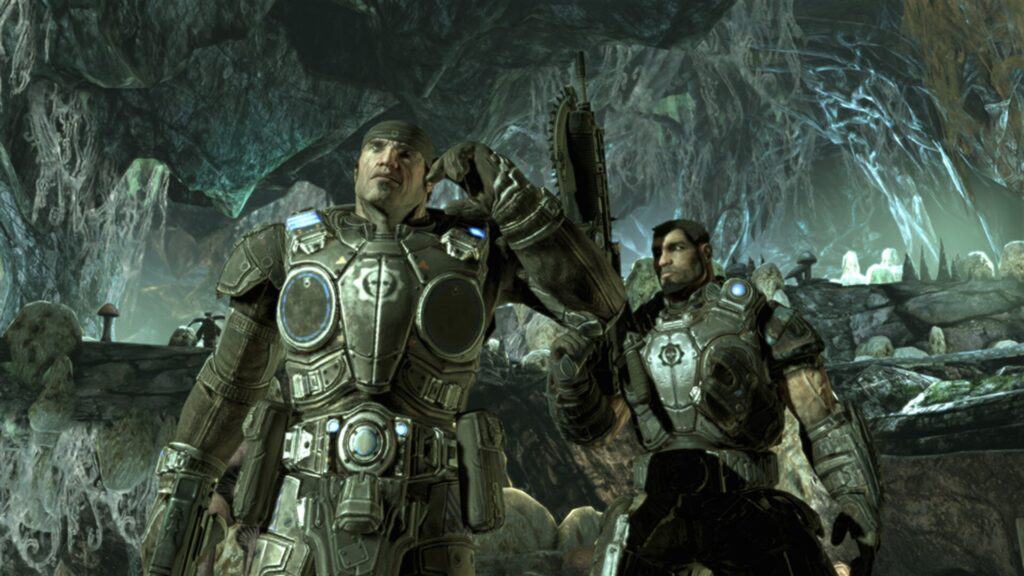
Gears of War 2 is a sequel done right. The game takes everything players loved about the original game, and iterate upon it without changing the overall feel. It brought several new mechanics such as Lancer chainsaw duels, and the ability to use downed enemies as meatshields. The iconic executions from the original remain intact, but now players have a more tactical option available to them. As well as this, players can now plant grenades for the first time in series history. This means that situational awareness was more important than ever, as every corner you round could be your last.
In terms of the story, Gears of War 2 continues to follow the story of Delta Squad as they look to push back the Locust invasion of Sera. Here, you’ll play as Marcus Fenix leading the counter-offensive into Locust heartlands, as the enemies attempt to sink the major cities of the planet. While characters such as Marcus, Dom, Cole, and Baird all make their return, new characters such as Benjamine Carmine, Tai Kaliso, and Dizzy Wallin proved a hit with players.
For many, the multiplayer of Gears of War 2 is a series high. Modes such as Execution, Warzone, and Annex return from Gears of War, with new modes Guardian, Submission, and the 2v2 Wingman providing a fresh change of pace. To sweeten the deal, the game comes with many of the fan-favorite maps from the original game, while incorporating several maps that would become classics such as Blood Drive and Jacinto. This was a game going up against Call of Duty and Halo at arguably the height of their popularity, and it rose to the occasion.
Gears of War 3 (2011)
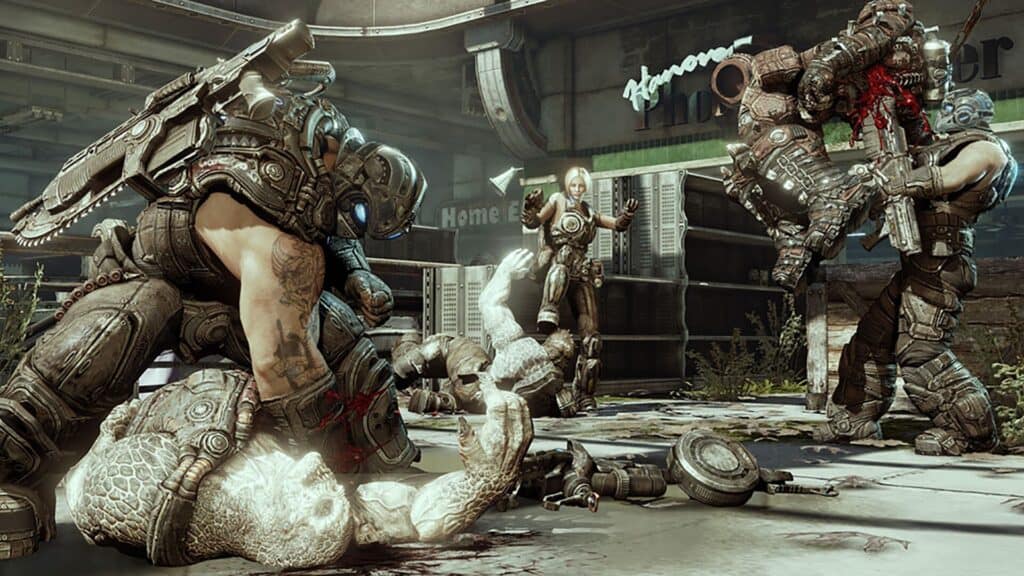
You’ll struggle to find a fan of the series that doesn’t love Gears of War 3. Like the previous sequel, the game doesn’t do too much to shake up the core gameplay. But if it isn’t broken, don’t try to fix it! Here, the main changes to the gameplay come via the addition of new weapons. The Retro Lancer, Digger, and Sawed-off Shotgun provided a new combat dynamic, shaking up the meta that had developed over the previous two releases.
The single-player of Gears of War 3 is a series-best, tying together the story threads building in the past two games. Here, the stakes are higher than ever, and you can really feel the desperation and devastation portrayed by the narrative. It’s a grand conclusion to Epic Games’ trilogy, and for many, it’s where the series should have concluded.
Gears of War 3‘s multiplayer was eerily similar to its predecessor. There was a new coat of paint, sure, as well as some new maps. However, at its core, this was Gears of War 2 on steroids. Some elements of modern gaming made it into this release, with the addition of paid weapon skins perhaps the most egregious. Despite this, the strength of the gameplay shines through, and Gears of War 3‘s multiplayer is still an absolute blast to this day.
Gears of War: Judgement (2013)
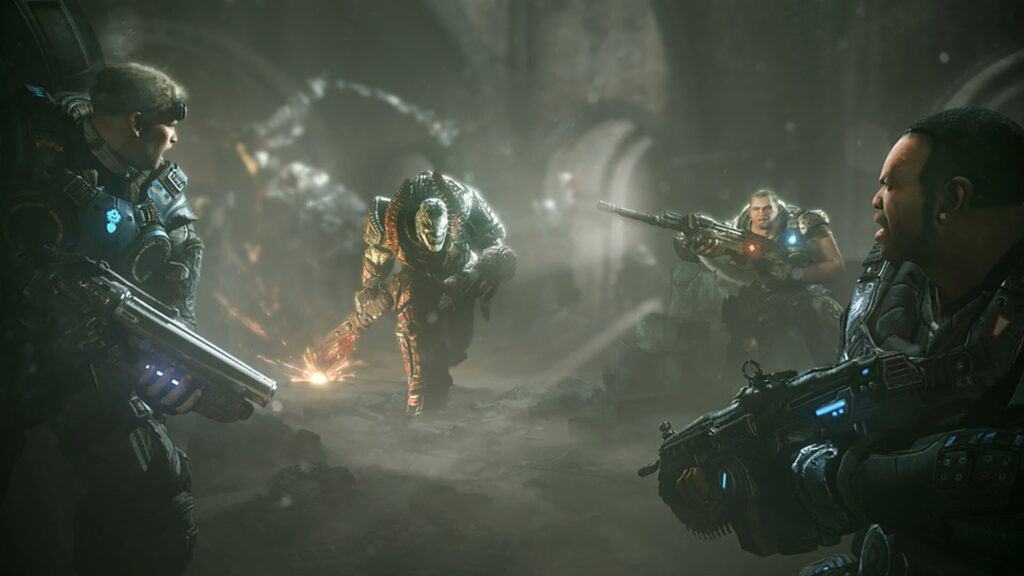
Released in 2013, it’s difficult to say to this day why Gears of War: Judgement exists. Developed by People Can Fly in collaboration with Epic Games, the game is a spin-off prequel focusing on popular characters Baird and Cole, and ultimately fell flat in the eyes of the community.
The story of Gears of War: Judgement is told via a series of flashbacks, to the earliest days of the Locust-Human war. While Baird and Cole are a fun and popular duo, they’re very much side characters. Shoehorning them into a main role was not well received by fans, and the game was a commercial flop.
Like every other game, Gears of War: Judgement features a multiplayer component, and introduces the OverRun and Free-for-All modes. While the attempt to bring new content should be praised, the decision to remove the ability to use both the Lancer and the Gnasher shotgun at the same time was disastrous. This was the standard base of the previous three games, and in hindsight it was nonsensical. The multiplayer also saw the removal of human vs Locust combat, moving to human vs human instead. This only served to take away from Gears of War‘s unique setting, and there’s a reason it hasn’t been replicated since.
Gears of War: Ultimate Edition (2015)
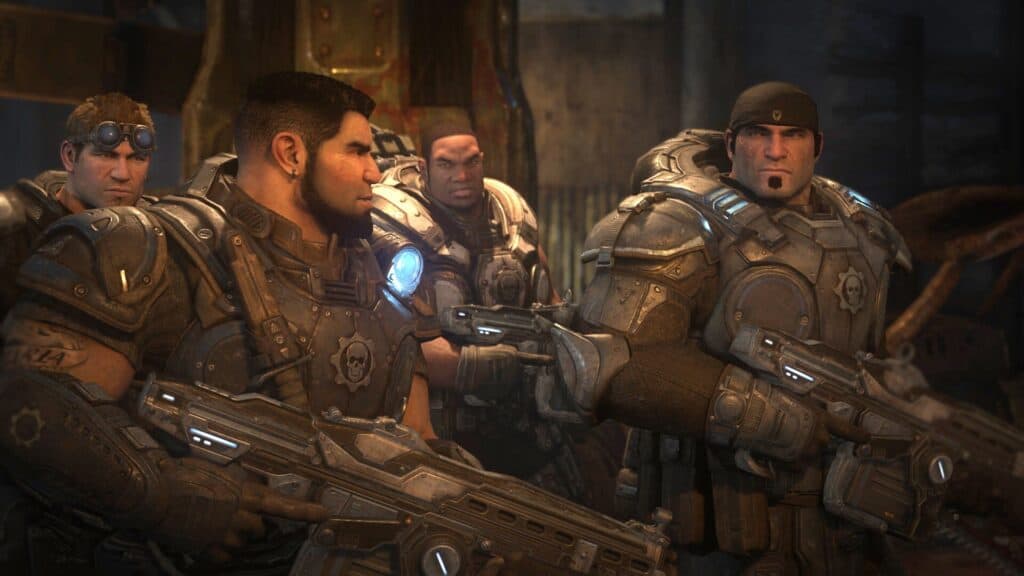
In 2015, The Coalition received the responsibility of bringing the original Gears of War to the Xbox One and PC, marking their first release in the series. The end result was Gears of War: Ultimate Edition, a remaster of the original game that stays faithful in every way. Seriously – this is exactly the same game, but prettier to look at. It does however bring five additional chapters to the Xbox version, which were previously exclusive to the PC version of the game.
Unlike many remakes and remasters, Gears of War: Ultimate Edition wasn’t just a single-player experience. Too many re-releases exclude the multiplayer portions of the game. It had to be included here, considering how essential it was to the original Gears of War experience. The Coalition did a great job with this, and the gameplay still holds up today.
Many gamers continue to clamor for some form of remastered bundle in the vein of Halo: The Master Chief Collection for Gears of War: Ultimate Edition, 2, and 3. This would allow the latter two titles to finally make their way to PC, but right now that doesn’t seem to be on the cards over at The Coalition.
Gears of War 4 (2016)
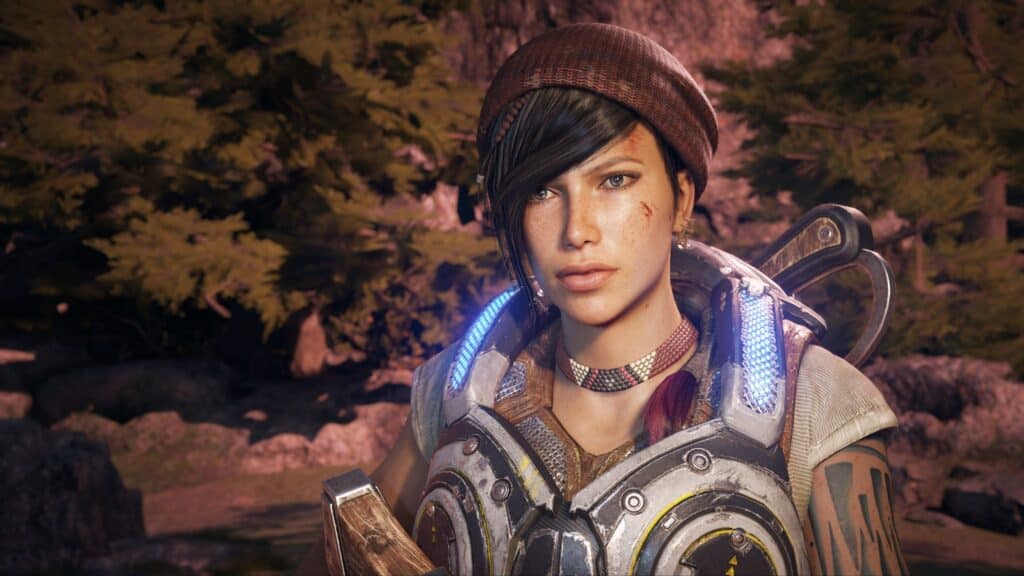
After Microsoft purchased the rights to Gears of War from Epic Games back in 2014, work immediately began on a return for the franchise. Black Tusk Studios took on the task, and renamed themselves The Coalition to indicate the change in direction. Overall, it’s hard to deny the studio played it safe. Gears of War 4‘s gameplay doesn’t take too many risks, yet proved The Coalition was up to the task of getting the formula right. Many around its release compared it to Star Wars: The Force Awakens, a product that plays on nostalgia to reintroduce people to a series, while setting the foundations for more original things to come.
Set 25 years after Gears of War 3, the story of the sequel follows JD Fenix (son of Marcus of the original trilogy) as he seeks to stop the Swarm, a threat borne from the ashes of the Locust. With new characters Del and Kait, the game takes the bold move of putting a new cast front and center. Old favorites Marcus, Baird, and Cole all appear in some capacity, although it’s in a much-reduced role. Considering this was The Coalition’s first outing, it’s not a bad showing.
Gears POP! (2019)
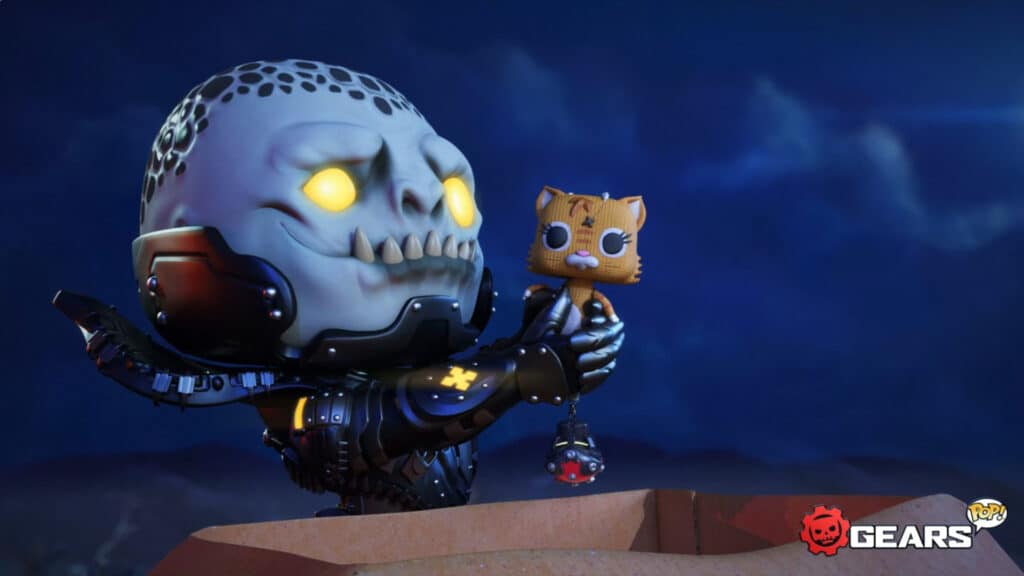
Taking advantage of the Funko Pop! craze, Gears POP! was a mobile real-time strategy game that allowed players to compete in Clash Royale-esque gameplay using Gears of War-themed Funko Pop! characters. The main difference was the inclusion of cover mechanics, a staple of Gears of War. You could use this cover to move toward the enemy turrets before they reach your own.
We’re not going to sugarcoat it. Gears POP! wasn’t very good, and didn’t have many players. In April 2021, the game’s servers were shut down for good. This left those that purchased microtransactions reeling. At the bare minimum, at least it was free to play.
Gears 5 (2019)
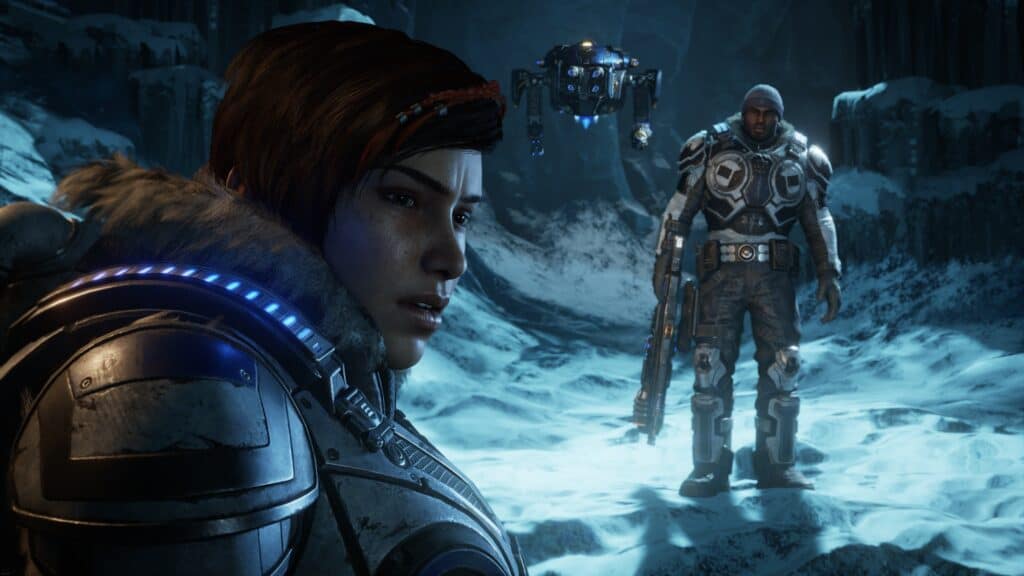
For The Coalition, Gears 5 represents a coming-of-age moment. It’s where the studio seems genuinely unafraid to take risks, doing so with confidence.
The real innovations arrive in the single-player campaign. First off, there’s a shift in the protagonist. While JD Fenix was a safe choice for Gears of War 4 as the son of Marcus Fenix, the focus here moves to Kait Diaz, a fan favorite for the previous game. It’s a natural shift, too. It feels like The Coalition is finally telling the story it wants to tell, without needing to pander to legacy fans. Some story choices proved controversial, and it will likely take the release of Gears 6 to see them justified. It’s certainly better than feeling nothing at all.
Also added to Gears 5‘s campaign is the addition of open-worlds. Previously, Gears of War campaigns were entirely linear, but this sequel includes a variety of hub worlds. You can traverse these areas using the Skiff, a new vehicle that transforms the game into an open-world experience. For the first time, you can undergo side quests away from the main story. It’s certainly a big deviation from the norm, but one that in our opinion, pays off.
In terms of multiplayer, there’s little we can say that we haven’t already. It doesn’t change much. At its core, Gears 5 is still using the mechanics of the original Gears of War. Epic Games pretty much nailed it the first time around, and the series has spent almost two decades trying to figure out how to improve it. All things considered, it’s genuinely remarkable how well that formula holds up. This lack of innovation might not be winning the hearts of critics, but the fans still love it.
Gears Tactics (2020)
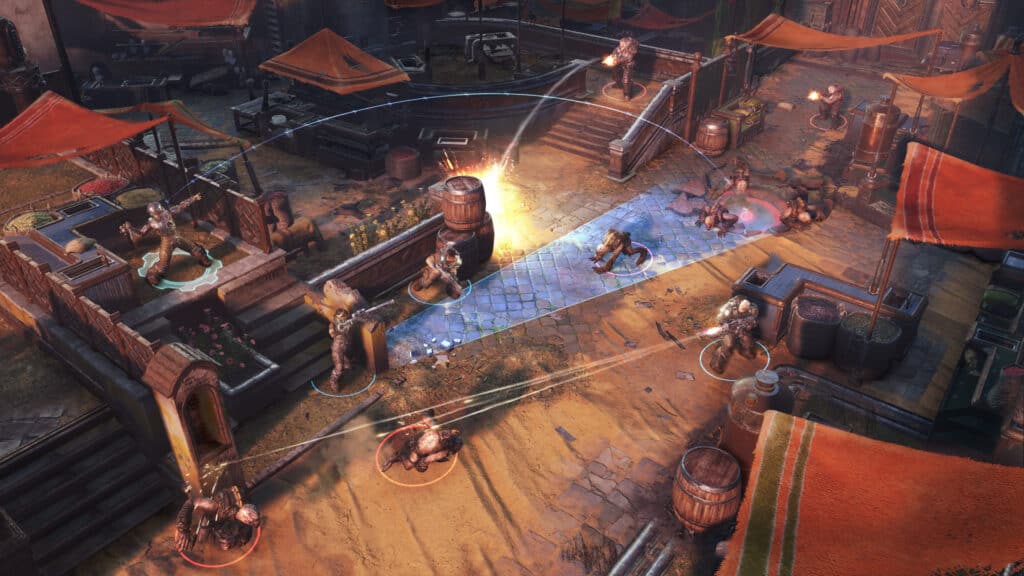
Finally, this brings us to Gears Tactics, the most recent game in the Gears of War franchise. The game takes heavy inspiration from XCOM: Enemy Unknown and its sequel, bringing turn-based tactical combat to the world of Sera. You command a squad of COG soldiers, completing a series of missions where you aim to eliminate all enemies as well as complete a set of secondary objectives. Each turn, you move your characters around the map, placing them into cover and firing at enemies where necessary. Your characters are comprised of different classes, so you need to consider the best soldier for the job in every situation. For the most part, death is permanent too, except for a few story-essential characters.
It would be all too easy to write off Gears Tactics as a cheap XCOM clone. There are undeniable similarities, for sure. However, the way it integrates elements of the series’ third-person gameplay into a new genre seamlessly is impressive and deserves praise. For example, you’ve got to use grenades to close Emergence Holes to stop spawning Locust, in the same way you do in the main games. As Gears Tactics is turn-based, taking the time to do this can be a death sentence, so you’ve got to think tactically about it.
As for the story itself, it’s standard Gears of War fare. Chronologically, the game takes place prior to the original game during the early days of the Human-Locust War. Some familiar faces from the series lore appear, with some great deep-cut references for huge fans. It’s not going to be for everyone, but Gears Tactics more than earns its place in the series. Returning players should at least give it a shot.
The image featured at the top of this post is ©Microsoft Game Studios.
